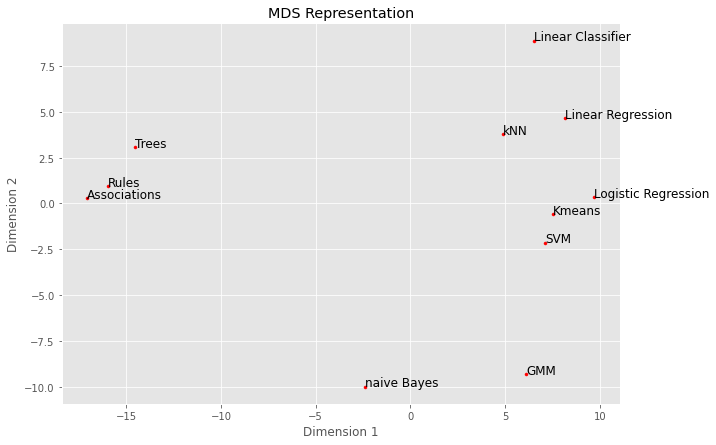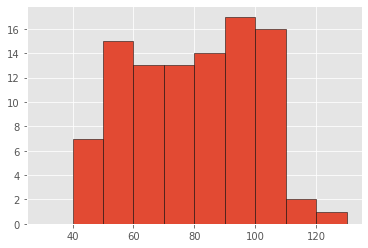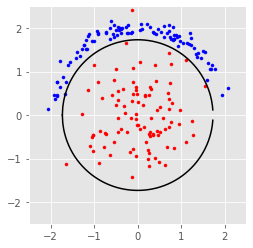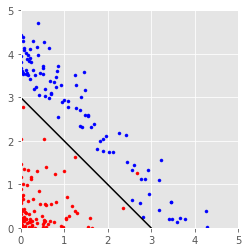Chapter 1¶
1.7 ML Methods¶
import numpy as np
import scipy.spatial.distance as dist
import scipy.linalg as linalg
import matplotlib.pyplot as plt
names = ['Trees', 'Rules', 'naive Bayes', 'kNN', 'Linear Classifier', 'Linear Regression',
'Logistic Regression', 'SVM', 'Kmeans', 'GMM', 'Associations']
features = ['geom', 'stat', 'logic', 'group', 'grad', 'symb', 'real', 'sup', 'unsup', 'multi']
M = np.array([
[1,0,3,3,0,3,2,3,2,3],
[0,0,3,3,1,3,2,3,0,2],
[1,3,1,3,1,3,1,3,0,3],
[3,1,0,2,2,1,3,3,0,3],
[3,0,0,0,3,1,3,3,0,0],
[3,1,0,0,3,0,3,3,0,1],
[3,2,0,0,3,1,3,3,0,0],
[2,2,0,0,3,2,3,3,0,0],
[3,2,0,1,2,1,3,0,3,1],
[1,3,0,0,3,1,3,0,3,1],
[0,0,3,3,0,3,1,0,3,1]
])
plt.style.use('ggplot')
w1, w2, w3 = 5, 3, 1
W = np.array([w1, w1, w1, w2, w2, w3, w3, w3, w3, w3])
M = M * W
D = dist.pdist(M, metric='euclidean')
D = dist.squareform(D)
def cmdscale(D):
n = D.shape[0]
H = np.eye(n) - np.ones((n, n)) / n
B = -0.5 * H @ (D ** 2) @ H
eigvals, eigvecs = linalg.eigh(B)
idx = np.argsort(eigvals)[::-1]
eigvals = eigvals[idx]
eigvecs = eigvecs[:, idx]
return eigvecs[:, :2] * np.sqrt(eigvals[:2]), eigvals
Y, eigvals = cmdscale(D)
plt.figure(figsize=(10,7))
plt.scatter(Y[:, 0], Y[:, 1], c='r', marker='.')
for i, name in enumerate(names):
plt.text(Y[i, 0], Y[i, 1], name, fontsize=12)
plt.xlabel('Dimension 1')
plt.ylabel('Dimension 2')
plt.title('MDS Representation')
plt.show()
1.8 ML Methods Tree¶
Diabetes¶
import numpy as np
import matplotlib.pyplot as plt
mupos = 90
muneg = 70
sigma = 20
Pos = 50
Neg = 50
px = np.random.normal(mupos, sigma, Pos)
nx = np.random.normal(muneg, sigma, Neg)
bins = np.arange(muneg - 2 * sigma, mupos + 2 * sigma + 10, 10)
counts, xout = np.histogram(np.concatenate((px, nx)), bins)
plt.style.use('ggplot')
plt.figure(1)
plt.bar(xout[:-1], counts, width=10, align='edge', edgecolor = "black")
plt.show()
counts = counts.reshape(-1, 1)
p = counts[:, 0] / (counts[:, 0] + counts[:, 0])
TP = 0
FP = 0
tp = [0]
fp = [0]
for i in range(len(counts)):
tp.append(TP)
fp.append(FP)
TP += counts[i, 0]
FP += counts[i, 0]
tp.append(TP)
fp.append(FP)
plt.figure(2)
plt.plot(fp, tp, marker='o')
plt.xlabel('False Positive Rate')
plt.ylabel('True Positive Rate')
plt.show()
counts2 = np.zeros((6, 1))
counts2[0] = counts[0] + counts[1]
counts2[1] = counts[2] + counts[3]
counts2[2] = counts[4] + counts[5]
counts2[3] = counts[6]
counts2[4] = counts[7] + counts[8]
counts2[5] = counts[9] + counts[10] if len(counts) > 10 else counts[9]
bins2 = [35, 55, 75, 90, 110, 130]
plt.figure(3)
plt.bar(bins2, counts2.flatten(), width=10, align='center')
plt.show()
/home/ck22122/anaconda3/envs/clmr/lib/python3.7/site-packages/ipykernel_launcher.py:24: RuntimeWarning: invalid value encountered in true_divide


1.11 Kernel¶
import numpy as np
import matplotlib.pyplot as plt
plt.style.use('ggplot')
x = 4 * np.random.rand(100, 1) - 2
y = np.sqrt(4 - x ** 2)
xe = x + np.random.normal(0, 0.1, (100, 1))
ye = y + np.random.normal(0, 0.1, (100, 1))
mean = [0, 0]
cov = [[0.5, 0], [0, 0.5]]
p = np.random.multivariate_normal(mean, cov, 100)
xaxis = np.arange(-np.sqrt(3), np.sqrt(3), 0.01)
plt.figure(1)
plt.axis("square")
plt.xlim([-2.5, 2.5])
plt.ylim([-2.5, 2.5])
plt.scatter(p[:, 0], p[:, 1], color='r', marker='.')
plt.scatter(xe, ye, color='b', marker='.')
plt.plot(xaxis, np.sqrt(3 - xaxis ** 2), 'k-')
plt.plot(xaxis, -np.sqrt(3 - xaxis ** 2), 'k-')
plt.savefig("kernel-left.pdf")
plt.show()
plt.figure(2)
plt.axis("square")
plt.xlim([0, 5])
plt.ylim([0, 5])
plt.scatter(xe ** 2, ye ** 2, color='b', marker='.')
plt.scatter(p[:, 0] ** 2, p[:, 1] ** 2, color='r', marker='.')
plt.plot([0, 3], [3, 0], color='black')
plt.savefig("kernel-right.pdf")
plt.show()
